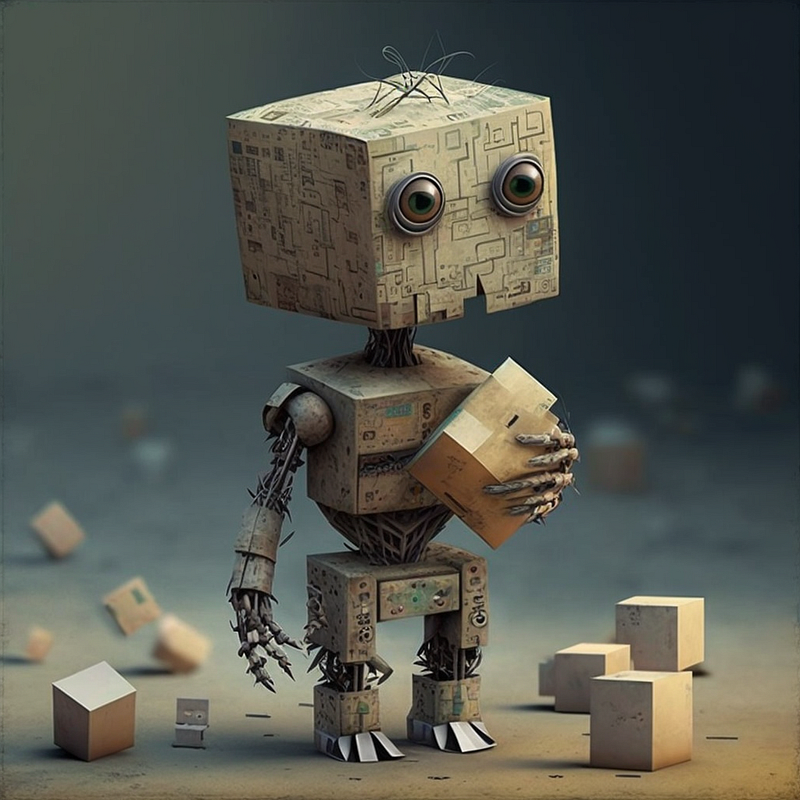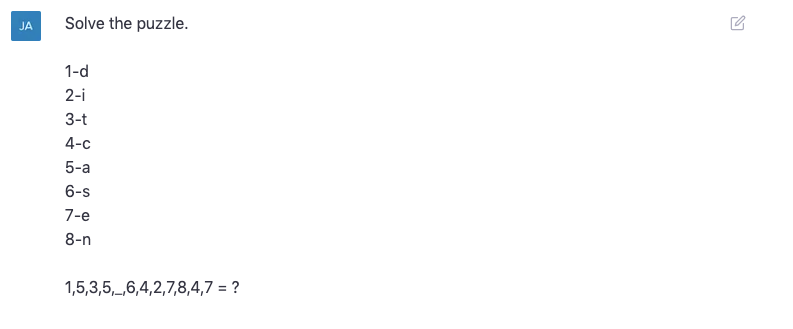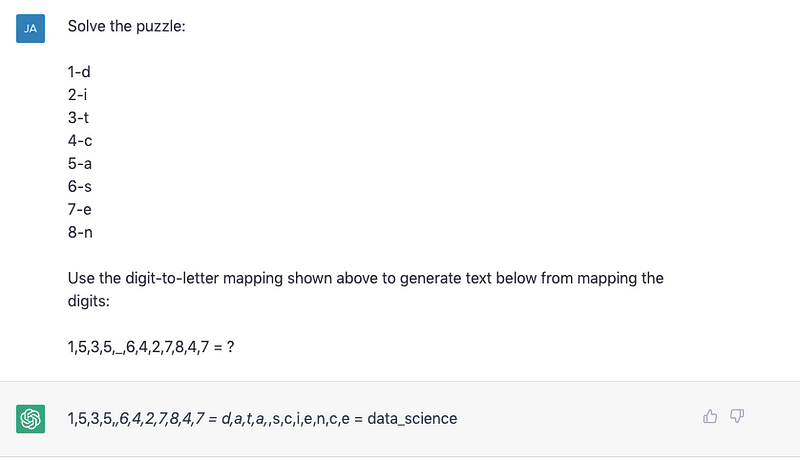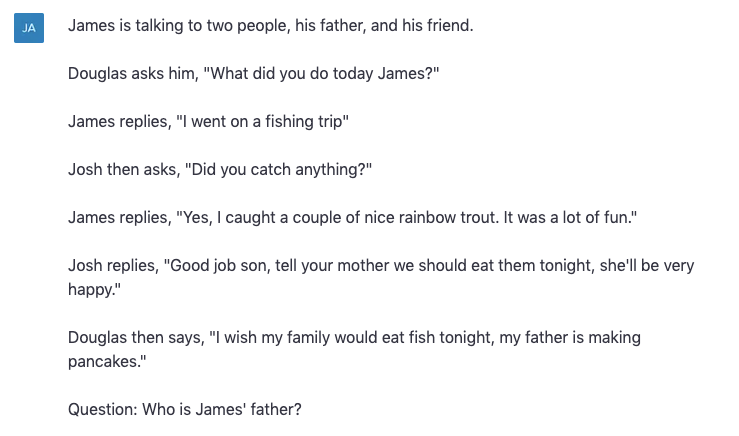The Unseen Limitations of ChatGPT: What It Can't Do Yet
Written on
Chapter 1: Introduction to ChatGPT's Capabilities
In recent times, many individuals have marveled at the impressive capabilities of ChatGPT. There is a growing curiosity about its potential applications. However, to fully grasp its utility, it is essential to also acknowledge its limitations and the situations where it may struggle. This article investigates various tasks I posed to ChatGPT to uncover what it fails to achieve. Let's dive in.
The Puzzle Challenge
Previously, I designed puzzles for GPT-3, leveraging the command line to see how well it could perform:

Despite its capabilities, I was disappointed to find that GPT-3 struggled with some puzzles and couldn't solve others at all. Now it's ChatGPT's turn to be tested. I chose a puzzle that GPT-3 had completely failed, simplifying the task by removing the command line aspect:

The goal was to map numbers to letters, forming the phrase "data science." What response did ChatGPT generate?

Unfortunately, the answer was far from accurate. Let’s explore what happens when I provide clearer instructions:

With this guidance, ChatGPT was able to arrive at the correct answer. A human would likely solve this puzzle intuitively, given the limited options. It seems that ChatGPT struggles with deduction in this scenario.
Logical Reasoning Experiment
Next, I assessed ChatGPT's ability to draw logical conclusions from a dialogue:

In the conversation, one speaker mentions their father. The only possible candidates are Douglas or Josh. A clear hint is Josh's comment, "Good job son," along with other remarks indicating family dynamics. However, despite asking ChatGPT multiple times, it consistently identified Douglas as the father:

This raises questions about the reasoning process behind its responses.
The Trick Question Challenge
I then created a trick question:

The concept is that after the first day, the 10 coins will magically transform into 20 apples, and there won't be any coins left to convert thereafter. Can ChatGPT solve this puzzle?


Out of four attempts, all responses were incorrect, with three variations in the answers. While the question could be interpreted as ambiguous, I attempted to clarify it further:

Despite multiple rephrasings, ChatGPT only answered correctly about 20% of the time, indicating a significant struggle with the task.
Summary of Findings
While ChatGPT is often praised for its capabilities, it’s crucial to recognize its shortcomings. The examples provided demonstrate that it is still a long way from matching human cognitive abilities. Interestingly, it can sometimes generate impressively sophisticated responses to complex inquiries, yet falters on simpler tasks. This suggests that ChatGPT primarily relies on interpolation, effectively addressing questions similar to those it has previously encountered. However, when faced with novel inquiries that demand extrapolation beyond its training data, it tends to struggle. The journey toward achieving true artificial general intelligence remains ongoing.
Chapter 2: Video Insights into ChatGPT's Capabilities
In this chapter, we'll explore two insightful YouTube videos that delve into the capabilities and limitations of ChatGPT.
The first video, "10 Amazing Things You CAN'T Do with ChatGPT," discusses various aspects of the AI's functionality and limitations.
The second video, titled "The Weirdest Things ChatGPT Can Do," uncovers some surprising and unique functionalities of the AI.